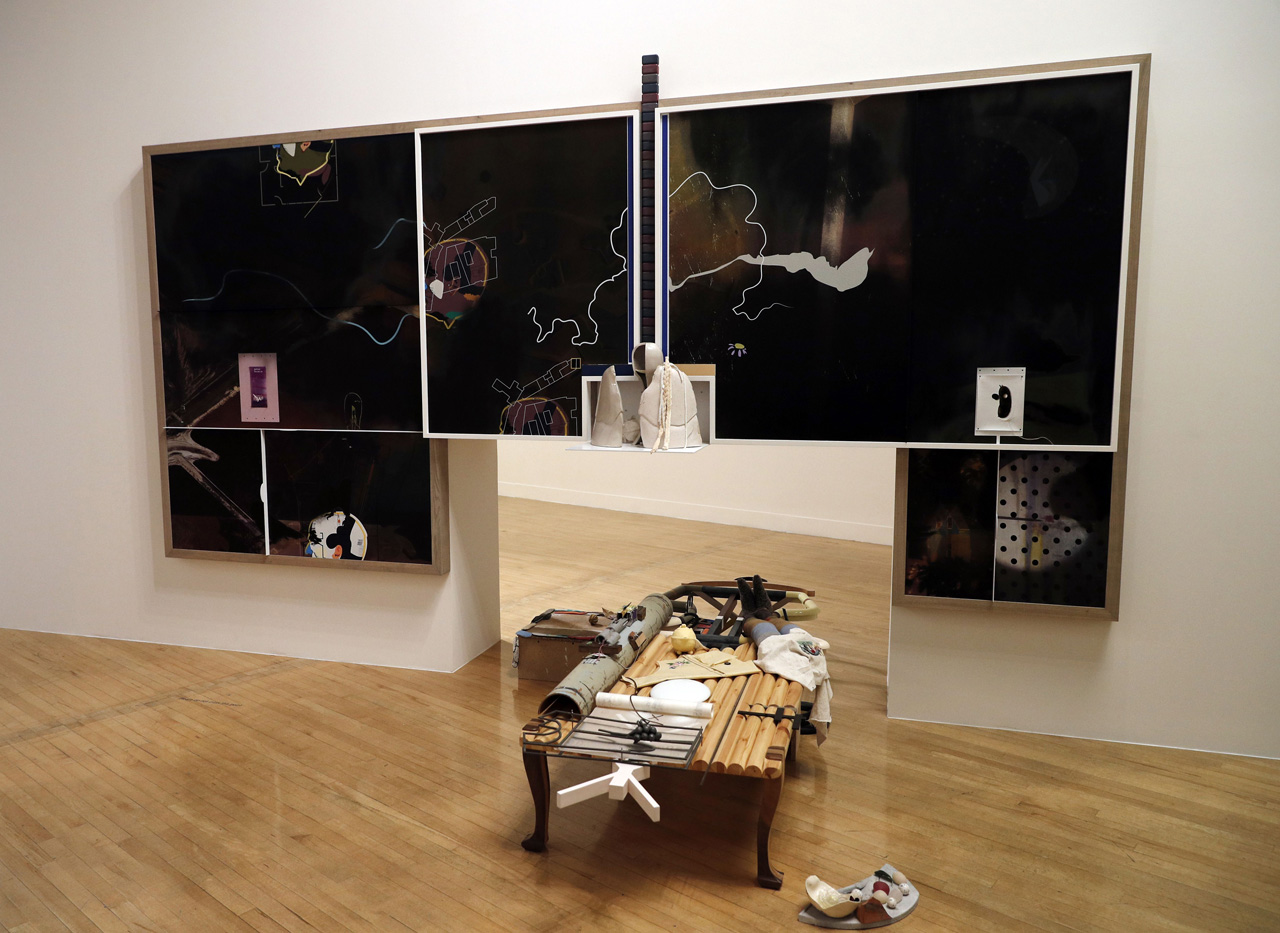News feed

Helen Marten’s collection of works Lunar Nibs and Eucalyptus Let Us In have been awarded the 2016 Turner Prize at the Tate Britain in London
Credit: Adrian Dennis/AFP/Getty Images
Helen Marten, a multidisciplinary artist who creates enigmatic, archaeological sculptures and installations from found and fabricated materials, has been announced as the recipient of the 2016 Turner Prize – Britain’s most prestigious (and contentious) contemporary arts award.
The prize, often considered something akin to the enfant terrible accolade of the art world, comes with a £25,000 – or $42,400 – prize, which this year was presented to the artist by writer Ben Okri during a live broadcast on the BBC. As was the case when she won the inaugural £30,000 Hepworth Prize for sculpture only weeks prior, Marten, 31, announced her intention to share the winnings with the three other shortlisted artists, which this year included Michael Dean, a multimedia artist; Josephine Pryde, a photographer who creates sculptural installations; and Anthea Hamilton, whose Turner Prize work Project for Door (After Gaetano Pesce) is perhaps the year’s most eye-catching, if only for the fact that it’s a giant, gilded posterior.
The Turner was established in 1984 and is given each year to an artist under the age of 50 who lives or works in Britain. Artists are nominated each year for recent exhibitions of their work. Marten won for works including Eucalyptus, Let Us In, an exhibition that appeared earlier this year at the Green Naftali gallery in Manhattan, and for Lunar Nibs, exhibited the year prior at the 56th Venice Biennale. Another of Marten’s works, The future is already here – it’s just not evenly distributed, was included in the 20th Biennale of Sydney earlier this year.
The jury praised Marten’s work for its “poetic and enigmatic qualities, which reflect the complexities and challenges of being in the world today.” They also noted the extraordinary range of materials in her work, which in the case of Lunar Nibs (pictured top) includes steel, aluminium, ash, cherry, chipboard, blow glass, glazed ceramic, screen printed latex, resin, jesmonite, stones, rubber, gold leaf, cotton, nails, magnets, heating filament, lace, vinyl, twigs, concrete, brass, neoprene, cardboard, sand, sugar, felt and oyster shell – to name but a few.
An exhibition of the four shortlisted artists’ work will remain open at Tate Britain until January 2, 2017.
Tile and cover image: Carl Court/Getty Images










